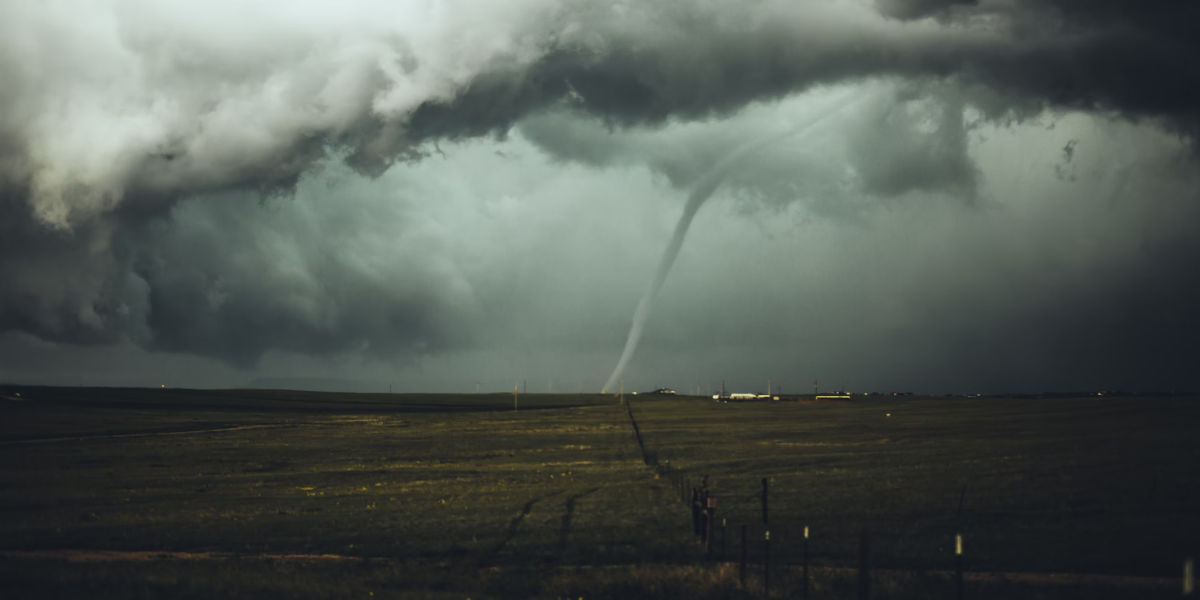Unpredictable and uncompromisingly powerful, tornadoes are one of nature's most devastating phenomena. Darting from the sky with unrelenting force, they stir fear in communities worldwide. Yet, the science behind what causes tornadoes and their attributes remains absolutely fascinating. This article explores the causes of tornadoes, understanding weather patterns that lead to their formation, and provides an overview of some of the biggest tornadoes in history.
What Causes Tornadoes: Understanding the Storm's Genesis
Tornadoes, colloquially known as 'twisters', are incredibly violent weather phenomena that originate from thunderstorms, particularly those associated with supercells. A supercell is a unique form of thunderstorm characterized by the presence of a rotating updraft, known scientifically as a 'mesocyclone'. The effects of tornadoes range widely, primarily dictated by their size, intensity, and trajectory. But what causes tornadoes to form in the first place?
The formation of tornadoes is a complex process that primarily hinges on a unique blend of atmospheric conditions. This process starts with different air masses colliding. A tornado often begins when warm, moist air near the surface starts to rise rapidly, meeting cooler and dryer air above. This creates instability, a crucial ingredient for severe storms and subsequent tornado formation. When these contrasting air masses meet, they create a rotating effect, fueled by the drastic differences in temperature and humidity. Increased wind speed or change in wind direction can intensify these rotations, subsequently leading to the genesis of a tornado.
Understanding Weather Patterns: A Key to Decipher Tornado Formation
A deeper understanding of weather patterns can help us predict potential tornado formations and save lives by issuing accurate and timely warnings. The capacity to comprehend these patterns, though complex, is not decisively out of reach. They revolve around the interpretation of several intertwined weather elements which include pressure systems, wind patterns, humidity, and temperature among others.
Weather fronts, the boundary separating different air masses, play a large part in tornado production. Cold fronts and warm fronts are the most common; they often lead to unstable air mass conditions and consequently, producing tornadoes. A cold front is where a cold air mass pushes underneath a warm air mass, causing the warm air to rise. A warm front, in contrast, is when a warm air mass moves over a cold air mass, creating instability. Opulent in moisture, warm air rises above the cold, generating cumulonimbus clouds associated with severe thunderstorms and potential tornado formation.
The Biggest Tornadoes in History: Unleashing Nature’s Untamed Fury
An exclusive club of extreme weather, the biggest tornadoes in history, have claimed countless lives and caused gigantic financial tolls. These titans painted a grim picture of adverse meteorological conditions converging at the wrong place and wrong time, exemplifying the devastating power of nature. As we delve into the annals of history, some of these storm systems stand out due to their sheer magnitude and impact.
Topping the list is the El Reno Tornado, which occurred on May 31, 2013, near El Reno, Oklahoma. This twister still holds the record as the widest tornado ever recorded with a maximum width of 2.6 miles. Despite the size, it surprisingly led to a low death toll, primarily due to its location which was mostly over rural land.
Next up is the infamous Tri-State Tornado which razed through Missouri, Illinois, and Indiana on March 18, 1925. With a devastation path of 219 miles, this tornado holds the record for the longest distance covered by a tornado. The death toll was much higher, reaching up to 695, and thus it ranks amongst the deadliest in history.
The Birth of a Twister
For a tornado to form, a certain set of conditions must be in place. It all begins with a thunderstorm, but not just any storm—specifically, a type of rolling thunderstorm known as a supercell. These giant storm systems can span up to 20 miles across, and their large, rotating updrafts are just the first step necessary for tornado creation.
Underneath the supercell, warm, moist air is dragged upward into the storm. As this air rises, it collides with cooler, dryer air coming down. This interaction creates a powerful wind shear, causing the air to spin on a horizontal axis. It's here where the stage is set for the deadly dance of a tornado.
The rotating column of air tilts vertically due to the upthrusted warmer air. If the spin becomes tight and fast enough, and the conditions are just right – a tornado can form.
When Twisters Touch Down
While the inception of tornadoes takes place miles above the ground, their destructive power is only realized once they touch down, reaching speeds of up to 300 miles per hour. A touchdown can last from a few seconds to more than an hour, but even the briefest one can cause immense devastation.
The merciless power of a tornado isn't solely from the wind. A tornado's low pressure can cause structures to explode when it passes over, its rotating winds can create flying debris, and the intense updrafts at a tornado's base can lift and hurl objects - including vehicles - hundreds of feet.
The World's Most Devastating Storms
While tornadoes can form nearly anywhere given the right conditions, certain areas are particularly prone. The 'Tornado Alley' in the United States is notorious for frequent and intense tornadoes. Similarly, 'Dixie Alley' in the Southeastern United States experiences high-density tornado occurrences.
Tornadoes vary in intensity, with their damage classified on the Enhanced Fujita (EF) scale. From EF0, causing light damage, to EF5, causing incredible devastation, these classifications evaluate the power of the storm. The 2011 tornado in Joplin, Missouri, categorized as an EF5, is among the deadliest and most destructive tornadoes on record, causing 161 fatalities and billions in property damage.
With a broader understanding of the nature and origins of tornadoes, we're better equipped to predict their formation and prepare for their impacts. As climate change continues, we're compelled to further examine how our changing world may influence the birth, life, and death of these terrifying storms.




